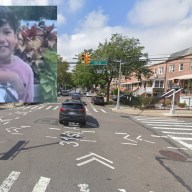By David J. Glenn
Contrary to what has been commonly expressed the past few days, the Sept. 11 terrorist disaster was not a case of life imitating art — it was a case of reality far exceeding anything the artists of the stage, screen, or printed word could have imagined.
Think of it — If a novelist, playwright, or screenwriter had come up with the idea of terrorists seizing not one, but four jets and within the space of an hour exploding both towers of the World Trade Center into rubble and destroying a big chunk of the Pentagon, most publishers or movie execs would probably dismiss the whole thing with, “It won’t sell. It’s not believable.”
“Even if terrorists could come up with such an elaborate plan,” the publisher would continue, “surely the CIA or FBI would get wind of it and be able to prevent it.”
Now, more than a week after the second Day of Infamy, the role of artists in all disciplines is not so much to analyze what Sept. 11 did to America and the world (most of us have a pretty good idea of that already ), but to calm us, to help in the mental healing as EMTs did for the physical injuries.
I think it was a mistake for so many TV stations to suspend their regular programming and give continuous coverage to the tragedy past Thursday, Sept. 14. By that time, instead of watching the horror over and over again, and hearing all the accounts repeated and repeated, we would have been better off to see a few sitcoms, watch an old movie. I’m not talking about denial or not facing reality — the stations easily could have broken into any broadcast for important developments, and there are many stations and networks on TV and on radio that offer 24/7 news anyway.
We all need the diversion of the arts, now more than ever. We all need a hug, as the New York Hall of Science figuratively offered last weekend.
We all need to heal.

































